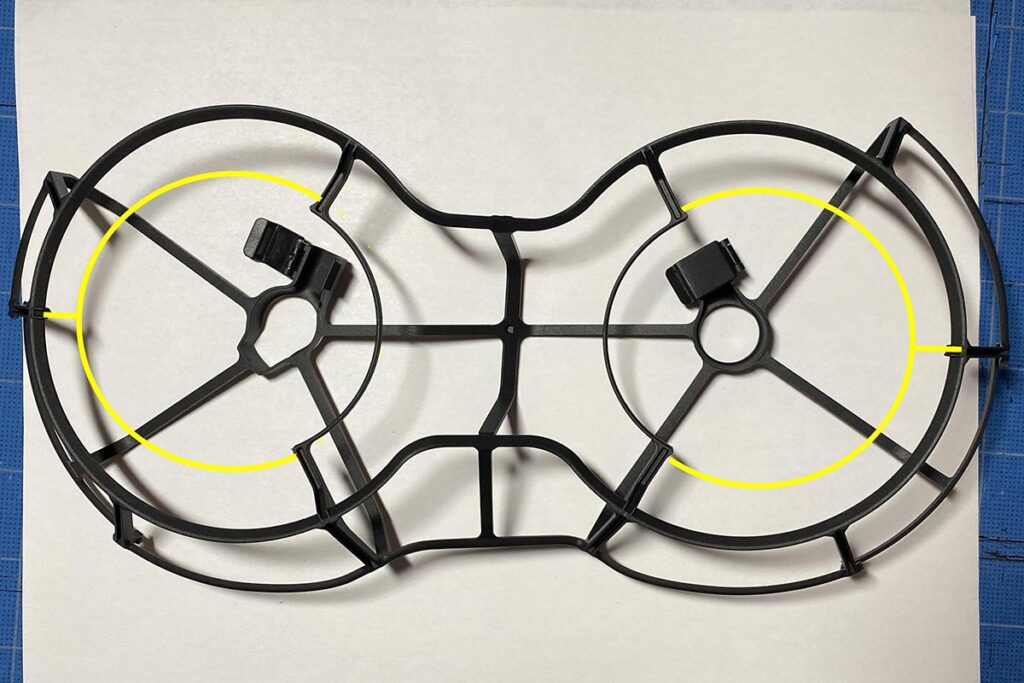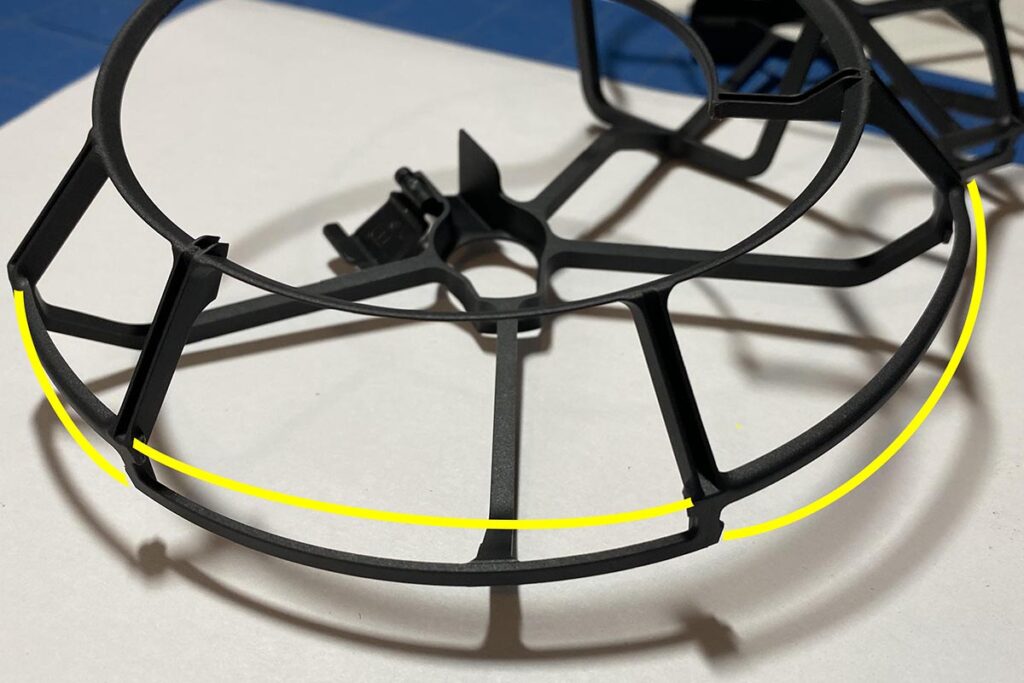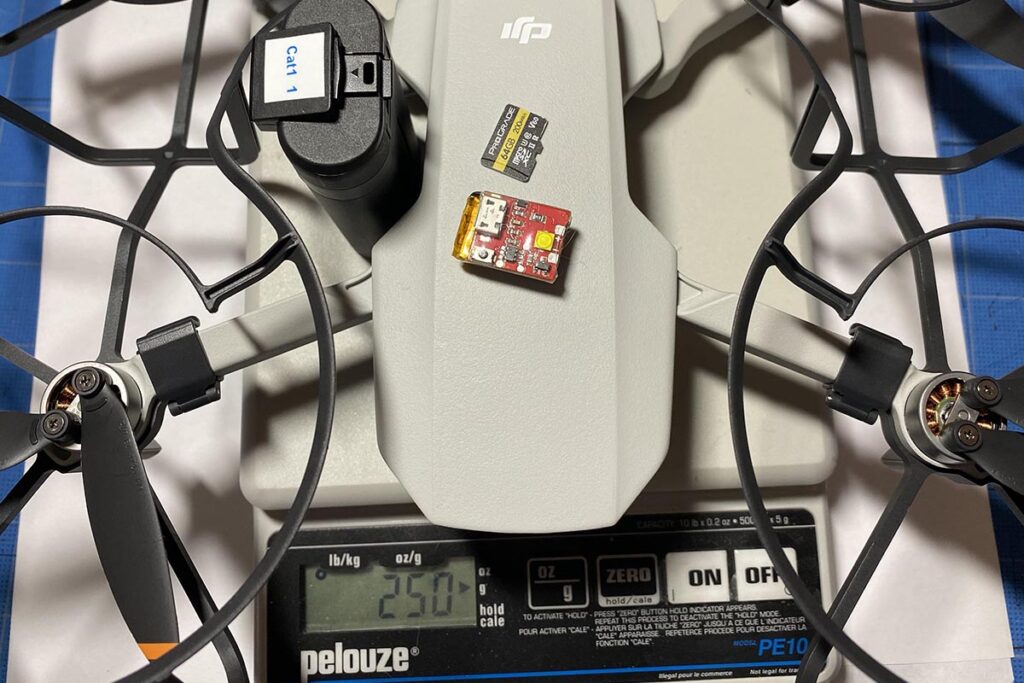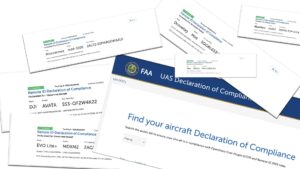Can the DJI Mini 2 be Category 1-Operations Over People compliant?
We think so. All it takes is the Japanese Mini 2 battery, and a bit of judicious prop cage shaving.
A quick disclaimer is in order. As per 14 CFR § 107.110, it is up to the Remote Pilot In Command (RPIC) to determine if a UAS is eligible for Category 1 Operations Over People (OOP). Category 1 requires the UAS to be 0.55lbs or less (<250g), as well as having no “… exposed rotating parts that would lacerate human skin…”. You can find that wording on page 4383 here.
So while this modification of the DJI Mini 2 does make it eligible under the weight limit, it is up to each individual RPIC to decide if this meets the laceration aspect of § 107.110. No legal or technical advice is implied here. This is simply an illustration of what I did to satisfy my safety threshold as RPIC.
So now to the meat and potatoes of the article…
The quickest and easiest way to have a Category 1 OOP Mini 2 is to simply buy the Japanese version. The Japanese version weighs in under 250g with a prop cage. However, “simply” is probably not the correct word to use here. First, it’s not easy to find them, and if you can, they will only ship the Mini 2 with the one battery that is installed in the drone. You cannot buy a Fly More kit, and Japan won’t allow LiPo batteries to be shipped by themselves. So while you’ll have a Category 1 compliant GPS drone, you won’t have much flight time.
The second option is to buy the Japanese Mini 2 batteries and have them shipped to the U.S. There are companies that do this, but they are also difficult to find. This is the tack I attempted, with no success. And it’s not quite the simple process either.
*A little birdie told me that DJI is talking about possibly submitting the Japanese Mini 2 batteries for UL certification. If so, problem solved. And they’d be fools not to. They have a massive ready to buy market here in the U.S.
I ended up with some Japanese Mini 2 batteries thanks to a conversation I had with another local drone pilot. Out of the blue he was contacted by someone who was selling them. He wasn’t looking, but knew I was. He bought them and sold the to me. That is how I ended up with those impossible to find batteries. So part one of this process was relatively easy, and simply fell into my lap. I had been looking (unsuccessfully) for quite a while.
So now I had a Category 1 compliant DJI Mini 2, with one glaring exception. I still needed to be under the 250g threshold while complying with the laceration limitation. That means propeller cages in my mind. But adding those brings the weight to just above the <250g limit. So I needed to trim the cages without jeopardizing the structural integrity of the cages. That would be sacrificing safety.
And that would defeat the entire purpose of this exercise.
So my dilemma was that I needed to shave around 5 grams off of the prop cages and still have a cage that I felt would do the job of keeping people as safe as possible, thus satisfying both the letter and spirit of § 107.110. So I put some analytic thought behind this and spent some time trying to see what would be sacrificed w/o hurting integrity. I came up with 5 grams worth.
And in hindsight, it wasn’t as hard of an exercise as I feared it would be.
First, I decided that we needed to maintain as much integrity as possible on the bottom of the prop cage. Because if the drone hit top first, the feature that turns off the prop when the Mini 2 flips over would stop the props so they wouldn’t be rotating upon contact with human skin. So that satisfies the laceration while rotating requirement.
Therefore the bottom of the cages must remain the strong point. And that meant I could be a little more flexible with the tops of the cages.
I decided that I could trim two areas, shave off enough weight, and still feel comfortable flying over people.
The first area I trimmed was the top circle of the cages. I removed 2/3 of each of the areas above the front and back props on each side (yellow circles). I also removed the connecting arm on each.
Second, I looked at the edges where there were double frames of the edge guards. I decided that if I alternated which ones I removed, the structural integrity remained and we have our weight down were I wanted it. I did this around all 4 prop areas. Yellow lines below represent the areas I removed.

By removing those areas I was able to bring the weight of the DJI Mini 2 with prop cages down an additional 5 grams. And now it’s in my safety comfort zone.
All in all, I feel this is a very safe way to make the DJI Mini 2 into a Category 1 compliant OOP drone. But it is up to each individual RPIC to decide for themselves if they agree. Some likely will, and some likely won’t. Some feel the folding aspect of the Mini 2 props satisfy that requirement just fine. We even had a couple of guests on our newscast and they showed the results of their Mini and Mini 2 laceration tests. One guest felt it passed that laceration test and didn’t rise to the level of the medical definition of laceration without any prop cages installed. The other fell on the side of needing prop cages with Japanese batteries. Which is the camp I put myself into. You can see that video here.
So there are obviously differing opinions on this subject. Which we love by the way. But, whatever option you chose, it’s imperative that you’re right if there is an incident.
The <250g requirement is black and white. Either you are under the weight limit or you’re not. It’s that simple. The tricky part comes into play when you are making the safety decision on the second part of § 107.110. Will your modification or decision prevent a laceration in the event of contact with human skin? That’s the $1,000,000 question that you better have right.
DSPA hopes this little article helps with your decision on getting Category 1 compliant.
Two additional quick notes on the subject.
First, in order to fly at night, you must add the 3SM strobe. While there are some that weight in at 5 grams, that’s pretty close to the limit. Make sure your scales are accurate. This is just a little too close for me. I’ll take them somewhere to double check before I consider this combination Category 1 compliant for night flights. 
And second, in order to fly “sustained flights over open-air assemblies”, you will need a Remote ID module. And when those are out, they’ll certainly weigh in at over 5 grams. So this method of OOP compliance won’t likely work once RID is a requirement.
But maybe we’ll have Category 2 drones by then? We can hope.
__________________________________________
Help Drone Service Providers Alliance keep the NAS free from unnecessary and overreaching drone regulations. Please consider joining DSPA.



